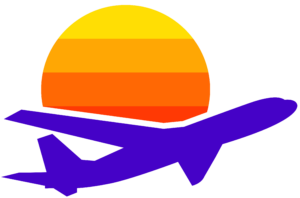The aviation industry was forever transformed when the Airbus A380 took its maiden commercial flight in 2007. As the largest passenger plane at the time, it dethroned the long-reigning Boeing 747 from its esteemed position. With a double-decker layout and four powerful engines, this colossal aircraft had the capacity to carry over 800 passengers, depending on the cabin arrangement of the airline. The A380 presented a promising solution to the growing issue of overcrowded air traffic at major international airports like Heathrow, JFK, and O’Hare. However, despite its initially optimistic reception, this pioneering aircraft faced a series of challenges that questioned its prominence in the aviation industry.
With the advent of more fuel-efficient alternatives like the Airbus A350 and Boeing 787 Dreamliner, the demand for four-engine aircraft began to dwindle. Airlines voiced their preference for these newer, more eco-friendly options due to their lower operating costs. While the A380 boasted attractive unit costs when fully occupied, the reality of consistently filling 550 seats proved to be considerably more difficult than filling a 350-seat wide-body aircraft. The shift in market demand aligned with the decline of four-engine aircraft, leading Airbus to make a stunning announcement a mere 12 years after the A380’s debut.
Amidst the widespread disruption caused by the COVID-19 pandemic, the A380 suffered immense setbacks in international long-haul travel. Its significant size and operating costs made it particularly vulnerable to the near-halt of air travel globally. Many analysts and industry experts predicted the demise of the superjumbos, fearing they would never regain their former glory. However, to their surprise, the A380 has experienced a resurgence, with numerous airlines reviving retired planes from storage. As of now, 10 airlines, including industry giants like Emirates, Lufthansa, Etihad Airways, and British Airways, continue to operate the A380. Airbus remains optimistic about the future of this behemoth, stating that it expects the aircraft to remain in service for at least the next two decades.
What Lies Ahead for the A380
The A380’s trajectory, while uncertain, offers glimpses of hope and challenges. Its reintroduction into service hints at its enduring appeal and the potential to meet future demands for long-haul travel. Nevertheless, the fate of the A380 ultimately hinges on its ability to adapt to changing market dynamics and economic pressures. As travel patterns evolve and environmental concerns intensify, the A380 must navigate these turbulent skies to secure its place in the aviation industry.
The Airbus A380’s debut as the world’s largest passenger plane sparked both awe and intrigue, promising a revolution in air travel. Over time, the aircraft faced formidable challenges, leading to a decline in orders and unforeseen hurdles. However, against all odds, the A380 has shown resilience and even staged a surprising comeback. It remains a remarkable feat of engineering that elicits admiration wherever it roams the skies. Only time will tell whether the A380 will ascend to new heights or be grounded for good, but its indelible impact on the aviation industry is undeniable.

